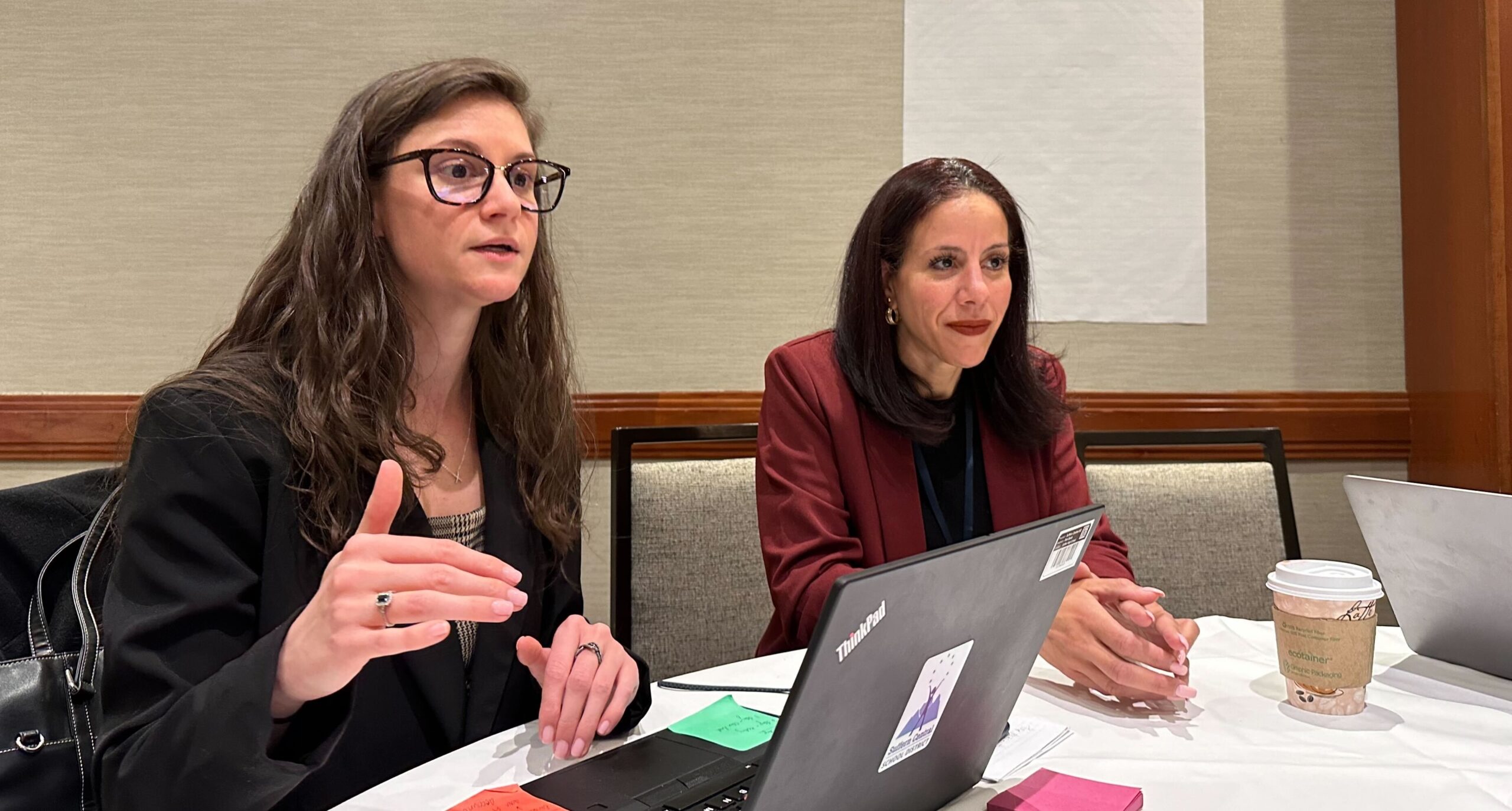
“It truly has been such a gift to be poured into the way I pour into other people,” she said.
This past March, Sanzo and other representatives from the Suffern Central and Mineola Union Free school districts were invited to speak at a session during the 2024 Spring League of Innovative Schools Convening about their work with Digital Promise to develop equitable cybersecurity programs and opportunities for youth through the Cybersecurity Pathways Initiative.
The initiative, which currently has its roots in 10 districts from the League of Innovative Schools in eight states and has 800 students enrolled, was launched last year by the Center for Inclusive Innovation (CII), in partnership with Paradigm Cyber Ventures and philanthropic support from IBM, in addition to integration of their digital training platform SkillsBuild. Their goal has been to address the cybersecurity labor shortage and forge pathways to employment for learners historically furthest from STEM opportunities.
Throughout the process, each district engages in the Inclusive Innovation R&D model to imagine and build their respective cybersecurity programs with their students and communities. And the best part? They do it in a way that fits the unique needs of their schools, teachers, and learners.

Suffern United School District teacher Ariel Sanzo, and Director of ENL and Equity Patricia Balbuena share key learnings from their cybersecurity pathways program at the 2024 Spring League of Innovative Schools Convening in New York City.
“We really wanted to think about: How do we intentionally co-design recruitment to make sure that students who have not seen themselves in that pathway can join, stay, feel like they belong, and then graduate into opportunities for career placement post-secondary?” said Dr. Kristian Lenderman, CII’s project director of education research and development initiatives, at the League Convening session.
Mineola High School’s three-year cybersecurity program offers both synchronous and asynchronous course options, which allows students with more complicated schedules or demanding course loads to still take the elective. Junior Dylan Hsiu is close to wrapping up his first year in the program and plans to continue taking the elective asynchronously his senior year. He was one of the featured speakers at the League Convening session and said what he really wanted to express to attendees was: Cybersecurity is for everyone.
“We want to make cybersecurity courses feel inclusive—they’re something that is needed in the world but you can also have fun doing it. You don’t need any prior knowledge to join the program,” he said.

Student Dylan Hsiu gives a presentation on Mineola High School’s cybersecurity pathways program during a site visit at the 2024 Spring League of Innovation Schools Convening.
This year, Mineola High School’s first cybersecurity cohort participated in the National Cyber Foundation’s CyberStart America competition, and Hsiu was one of eight students who ended up winning scholarships for advanced cybersecurity training and certification. He feels that everyone in the classroom is there because they want to be, which creates an environment that nurtures trust and inspires them to work together.
“In cybersecurity, you’re always going to have to collaborate with others to try and find out the solution,” he said. “It deepened our communication because we also don’t feel shy about giving each other different ideas or strategies to conquer the [competition’s] challenges.”
And it’s not just students who have benefitted from the new Cybersecurity Pathways programs at their schools. During the League Convening session, Suffern High School representatives shared that as they developed and implemented their program, they focused on three components:
“The teacher who does this program has to be hungry to learn just as much as the kids,” she said. “I want to invest in teachers who say to themselves, ‘There’s no way I can do this.’ But I took all the guesswork out of it. I’m saying yes you can.”
For both students and teachers, participating in the Cybersecurity Pathways Initiative has expanded what they thought possible for themselves, bringing much-needed new perspectives and talent into a rapidly growing field. They’re thriving, and all it took was saying yes to something new.
“A lot of times we think we have just one path or destination that we need to reach, but if you go off that path, you might find something even more memorable,” Hsiu said. “Cybersecurity could be the driving force to push you to go off path.”
Learn more about our Inclusive Cybersecurity Pathways Initiative on our website. If you’re interested in joining a future cybersecurity pathways cohort, email Kristian Lenderman.